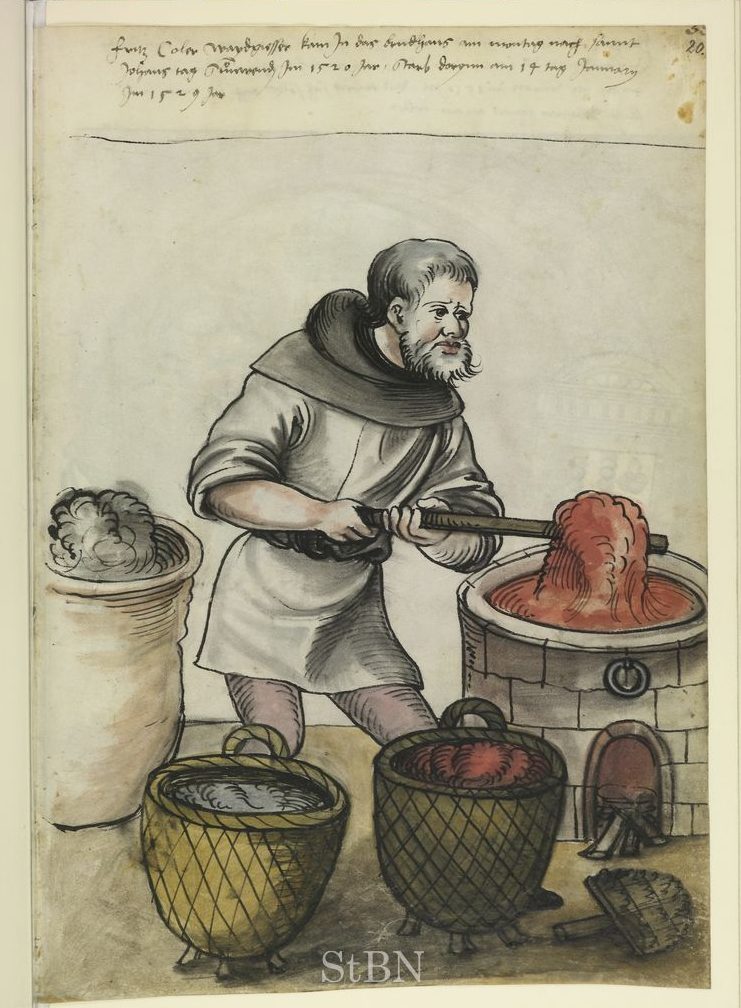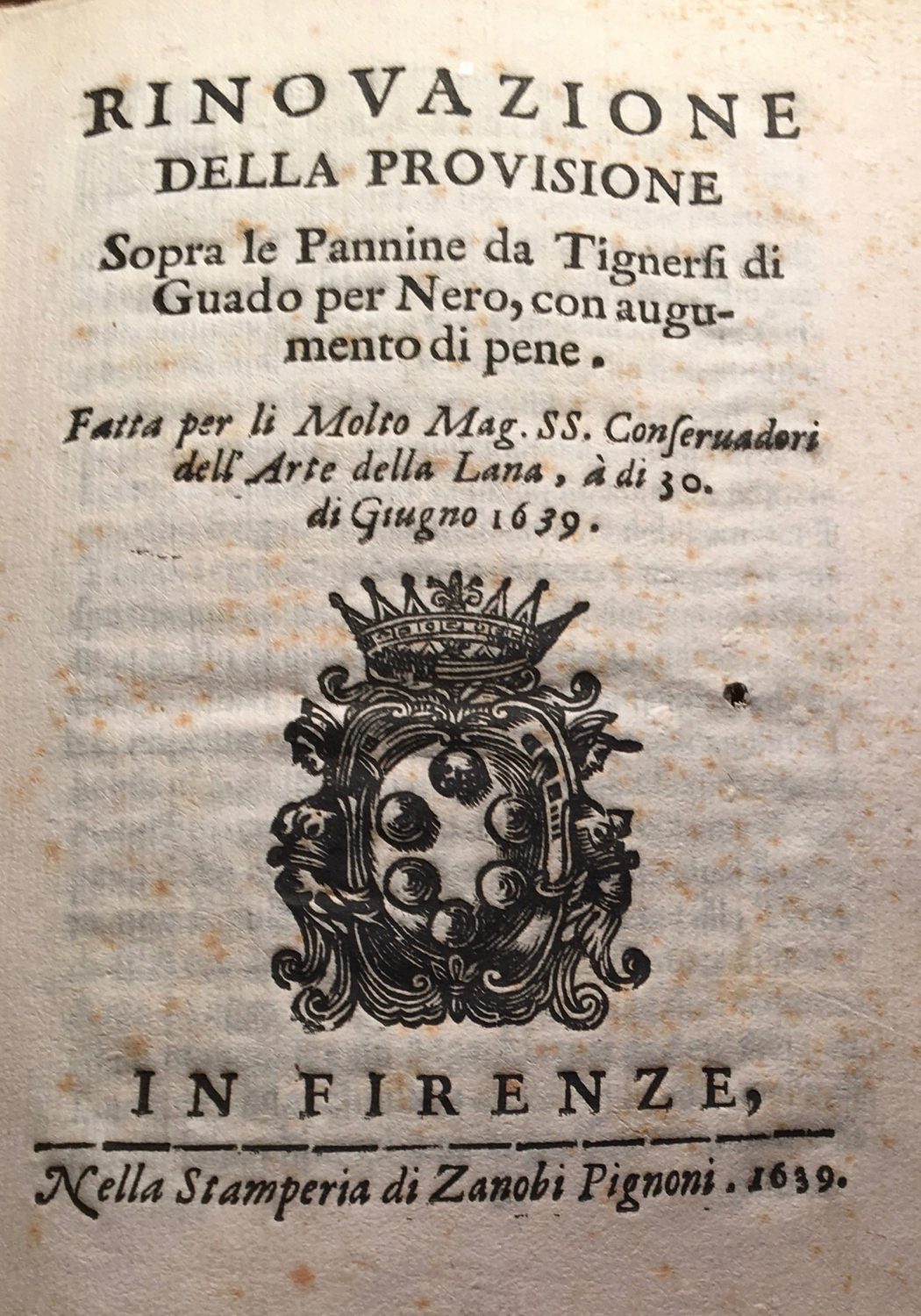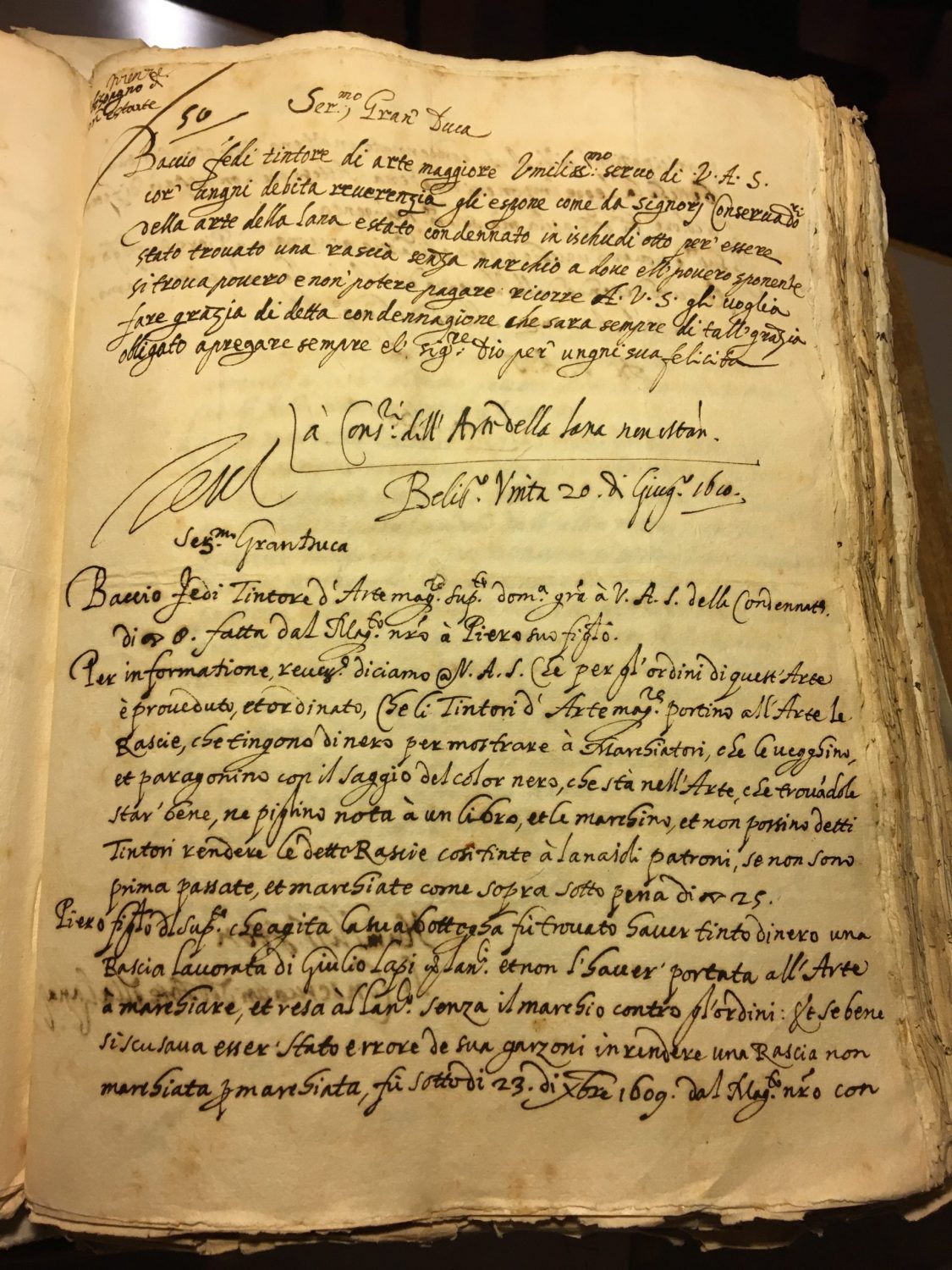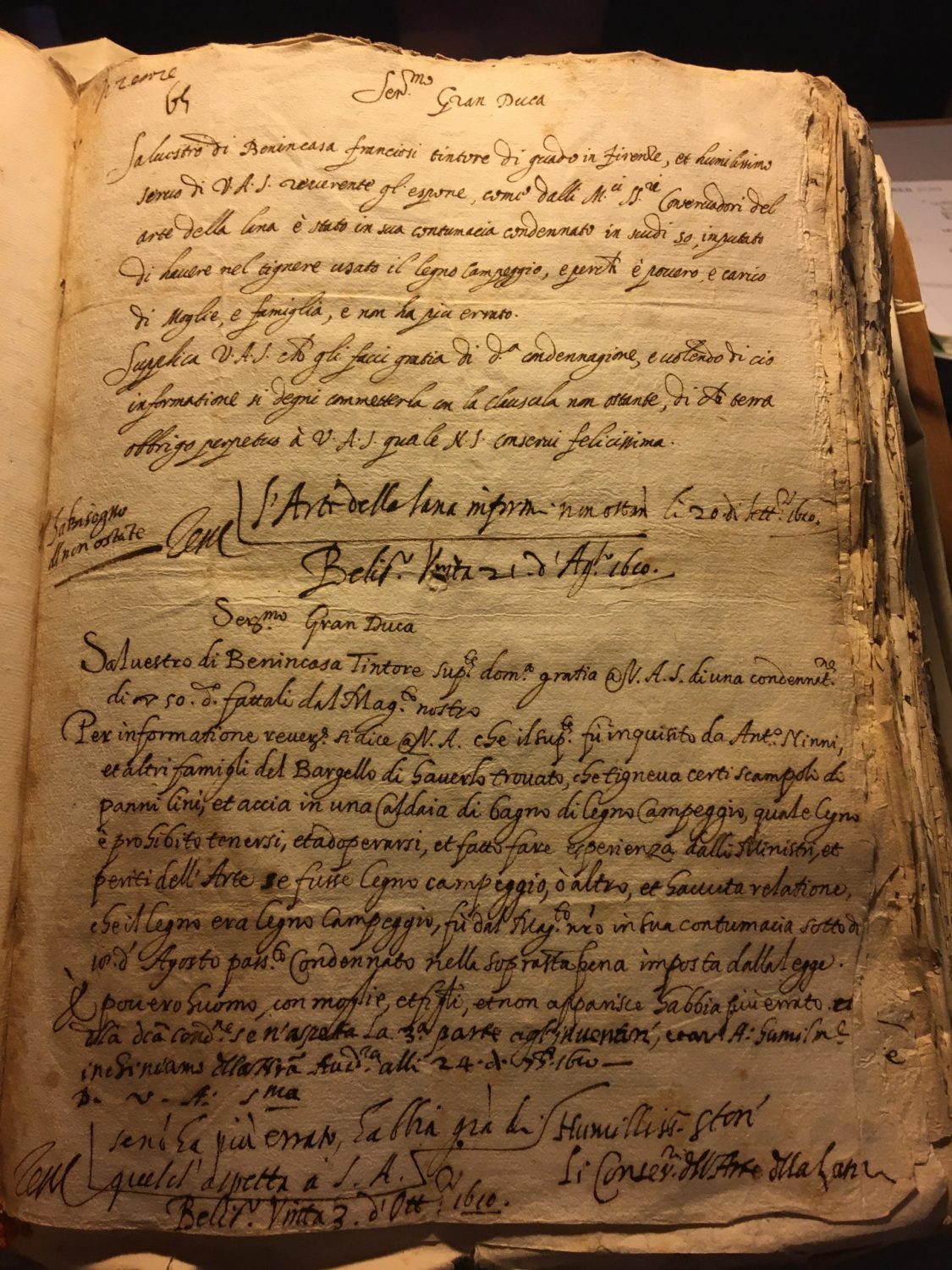Tracking down tintori in the Florentine state archives
By Victoria Bartels

Image 1: “Dying Wool Cloth,” from Des Proprietez des Choses by Bartholomaeus Anglicus, 1482, British Library, Royal Ms 15 E. III f.269.
In 2019, I was hired for three months by the Refashioning Project to identify archival sources that document the activities of cloth dyers (tintori) in Florence between the years of 1550–1650. The aim of this research was to support and complement the project work on colour and dyes, and in particular to provide new qualitative evidence that allows the team to gain a better understanding of the dye practices and dyestuffs that were in circulation in sixteenth and seventeenth-century Italy.
So how can we find out about dyes and dyers’ practices in early modern Florence?
An obvious place to start the archival search would have been the dyers’ guild records. However, since the lower-status artisans were not permitted to have their own guild in sixteenth-century Florence, I focused my research on the records of the Arte della Seta and the Arte della Lana, two Florence’s most prestigious and profitable organisations that worked in silk and wool, respectively. [Image 2]

Image 2: Andrea della Robbia, Coat of arms of the Arte della Lana, 1487, Museo dell’Opera del Duomo, Florence.
The suppliche (or supplications) were a particularly fruitful source that derived from the tomes of the wool guild, the Arte della Lana. [Image 3] These written requests that discussed illegal infractions pertaining to the laws surrounding the manufacture, regulation, taxation, and exportation of wool in Florence and its dominion, were usually sent by either craftsmen working in the wool trade or ordinary inhabitants who had illegally made, transported, smuggled, purchased, or sold woolen fabrics without the proper licensing or permissions.
The suppliche also include a number of cases involving dyers who were charged for illegal or dishonest activities regarding the dyestuffs or dye methods that they had used. One of the most frequent citations bestowed upon dyers was the use of prohibited materials in dye-baths, such as logwood from the New World (legno Campeggio) [Image 4], a new dye source used to produce black, which was outlawed by Cosimo I’s second son Duke Ferdinando I (1549–1609) in 1594 due to the product’s instability and the perceived damage it caused to the textile. If a fabric was suspected of having been dyed with logwood, it was deemed malatintura and consequently subjected to a barrage of tests by guild experts. [Image 5]

Image 5: Fritz Coler, Waidgießer, 1529, Amb. 279.2° Folio 20 recto (Landauer I), Stadtbibliothek Nürnberg.
Another charge that dyers faced was the fraudulent use of inferior materials in dye-baths, thus, allowing them to turn a bigger profit and cheat customers. This appeared to occur more frequently when dyeing fabrics red, as there existed a hierarchy of animal and plant-based pigments on the market, some of which included chermisi (crimson dye), robbia(madder), grana (kermes, or ‘grain’), and verzino (brazilwood). [Image 6]
Failing to register dyed materials with the Arte della Lana was probably the most often-cited offense in the records. The guild vehemently controlled all stages of wool production and required that workshops mark and register the items they produced for domestic and foreign consumption. If caught trying to circumvent the proper channels, dyers could be subjected to torture, fines, jail, and/or banishment. [Image 7]

Image 7: Rinovazione della Provisione Sopra le Pannine da Tignersi di Guado per Nero, con augumento di pene, 1639, Archivio di Stato di Firenze, Arte della Lana, vol. 451, un-paginated folio.
Our search on the dyers continues. You can soon read more about colour and these themes in the forthcoming articles “Innovations and Imitations of Fashion: Colour and Novelty in Early Modern Italian dress” and “Faded shades or new fashionable tints?: Colour in Renaissance Italian middling class dress” by Paula Hohti Erichsen… stay tuned!




